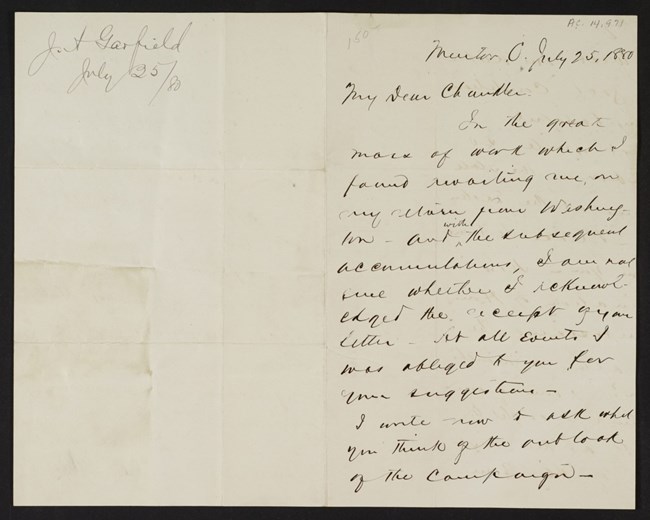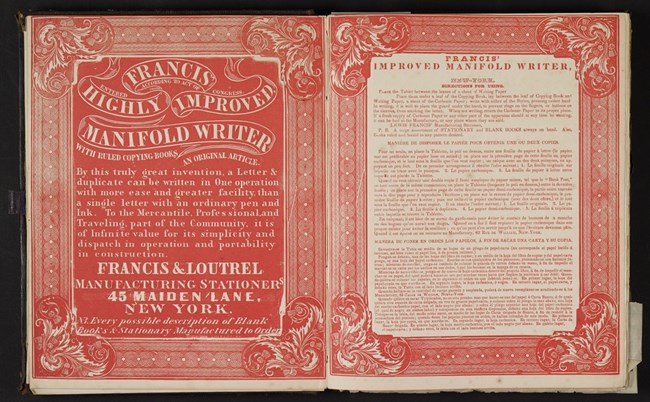Last updated: October 31, 2020
Article
Copying Campaign Correspondence

National Park Service
Before modern electronic copiers and email, it was difficult to manage things that were written and sent off to other people. Because writing was the primary means of communication over long distance, it became necessary for people to save letters they had received in order to keep track of long-running conversations. It was also helpful for a number of reasons for the sender to maintain a copy of what was sent to the recipient. Enter the letter press.
The press in the photo above is a representative piece very similar to the one used by one of two stenographers, George U. Rose and Joseph Stanley Brown, employed by James A. Garfield to copy his outgoing mail during his congressional career and especially during the 1880 campaign for the presidency. The Library of Congress collection of the Garfield Papers has thousands of letters that were copied by an apparatus just like this. They were bound in letterbooks and kept on file should the need arise to refer back to letters Garfield sent.

Library of Congress
According to historian JoAnne Yates, “As the [mechanical copying] technology came into common use, a screw-powered letter press was used in conjunction with a press book, a bound volume of blank, tissue paper pages. A letter freshly written in special copying ink was placed on a dampened page while the rest of the pages were protected by oilcloths. The book was then closed and the mechanical press screwed down tightly. The pressure and moisture caused an impression of the letter to be retained on the underside of the tissue sheet. This impression could then be read through the top of the thin paper.”[1]
[1] Yates, JoAnne. Control Through Communication: The Rise of System in American Management. Baltimore, MD: Johns Hopkins University Press, 1989.

Library of Congress
The press currently on display in the Campaign Office is a period piece dating to 1893, but similar to one used by Garfield and his staff there. Because of the preserved letters, we know that the Campaign Office once contained a nearly identical letter press.
